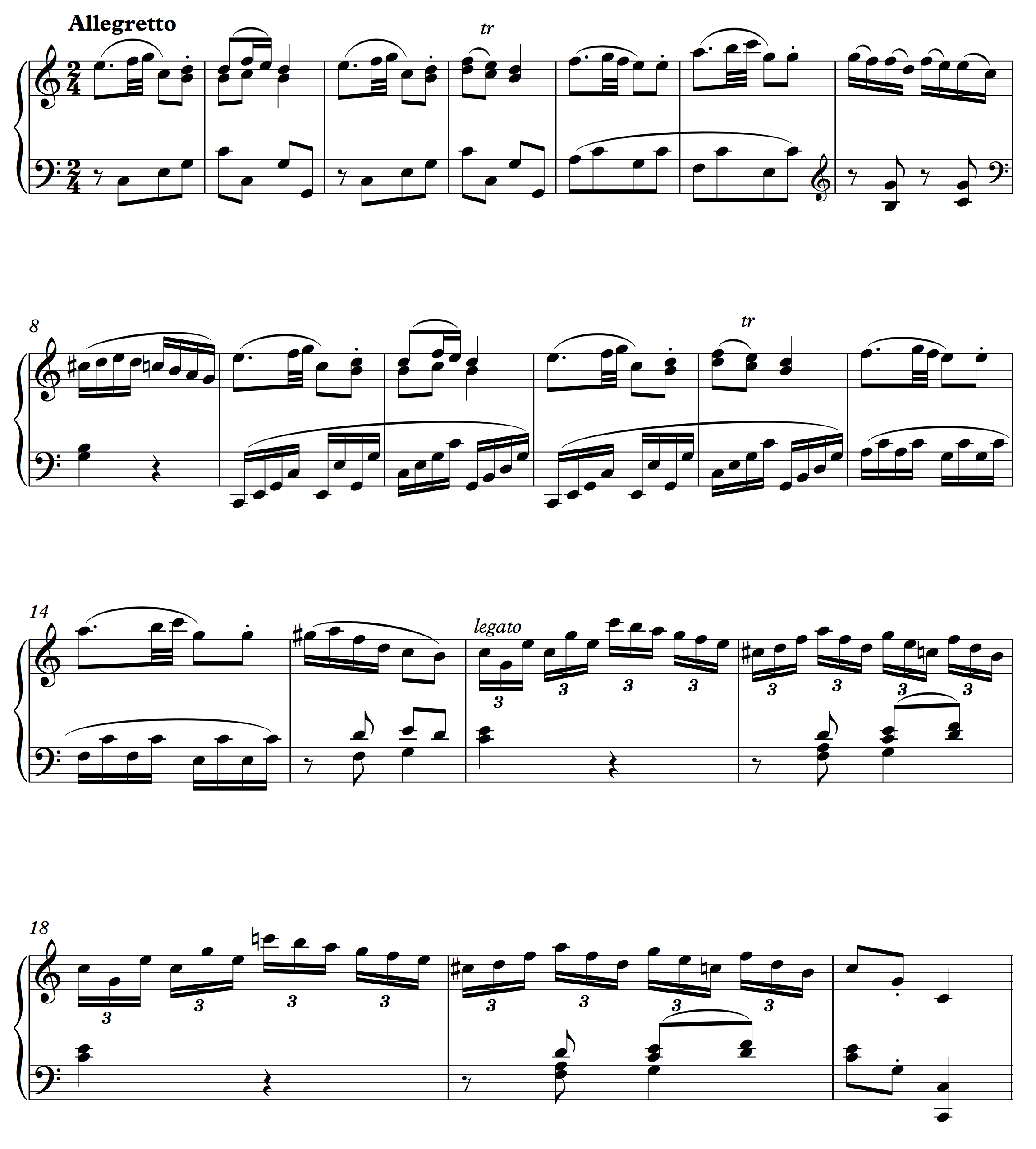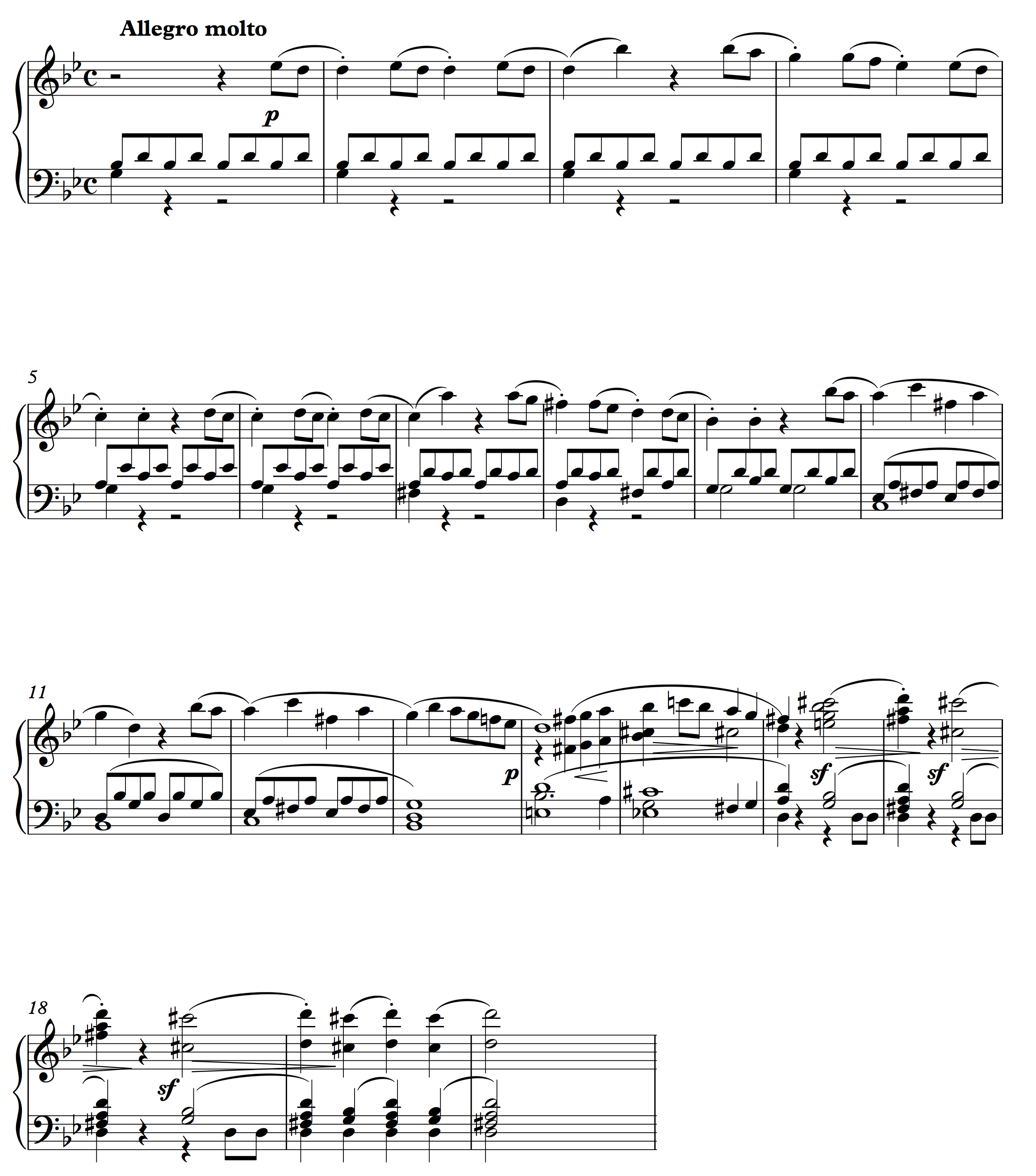External Expansions
A theme is often preceded or followed by material outside of its typical boundaries, but which is clearly dependent on the theme. This material is external to the theme itself— “before-the-beginning” or “after-the-end,” as William Caplin as termed it.
Prefix
An prefix is a passage—short or long—that precedes a theme. Short prefixes lack distinct motivic material and/or harmonic progression. While connected to the theme that follows, when removed prefixes do not disturb the logic of the phrase itself.

Here, a one-measure, accompanimental prefix prepares the four-measure antecedent phrase that begins in m. 2. The prefix lacks both a characteristic melody and harmonic progression.
Suffix
A suffix prolongs the harmony that closed the theme. Suffixes are described, and given different names, according to what kind of cadence, PAC or HC, ends the theme to which they are attached.
###Closing sections
Sometimes called codettas, closing sections follow themes that end with PACs.

The compound period here ends with a PAC in m. 16. Following the cadence, a five-measure closing section serves to confirm it. Notice that the melody is centered around scale degree 1—a common feature of these passages—and that harmonically the ii–V-I cadential progression that ended the theme (see m. 15 and 16) is simply repeated.
###Standing on the Dominant
When a suffix follows a half cadence, we refer to it as standing on the dominant. These passages are often signals for thematic entrances (such as the second theme of a sonata form movement) or thematic returns (such as the recapitulation in a small ternary).

This famous example begins with a one-measure prefix followed a compound sentence. The compound sentence ends with a half cadence in m. 16. (Notice the augmented sixth chord that precedes it.) The succeeding measures stand on the dominant, prolonging the cadence by emphasizing dominant harmony with scale degree 5 embellished melodically.
Share